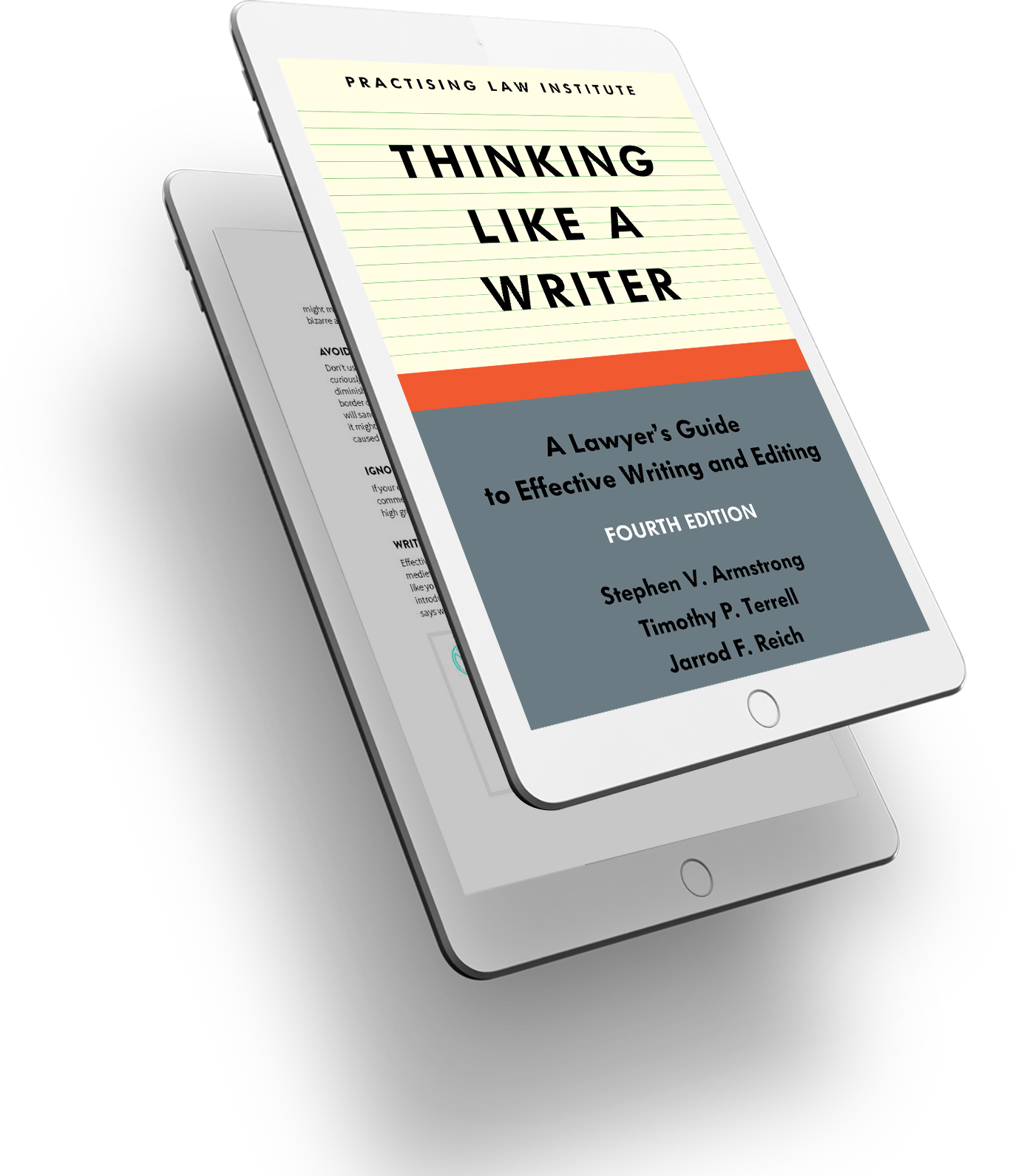
The first paragraph of a document is not necessarily an introduction, yet many lawyers treat it as if it were. That’s because lawyers think about what they want to say, not what the readers want to know. If that describes you, this chapter is sure to change your approach.
In Chapter 6, “Writing Effective Introductions,” authors Timothy Terrell, Stephen Armstrong, and Jarrod Reich confront the mistaken assumptions about introductions that often lead lawyers astray; walk you through strategies for writing effective introductions; and apply those strategies to real-world examples.
In this chapter, the authors show you how to:
With their advice, you’ll learn how to write an effective introduction that sets the stage for readers and gives them the framework to understand and use the information they’re about to receive. Download this chapter from Thinking Like a Writer: A Lawyer's Guide to Effective Writing and Editing and start improving your legal writing now.
Once you’ve made macro-level improvements, let WordRake help you tackle sentence-level improvement. WordRake is editing software for Microsoft Word and Outlook that will help you edit for clarity and brevity with one click. Try WordRake today!
Chapter reprinted with permission from the authors and PLI Practising Law Institute. Originally published in Thinking Like a Writer: A Lawyer's Guide to Effective Writing and Editing, Fourth Edition by Prof.Timothy Terrell, Stephen Armstrong, and Jarrod Reich. Copyright © 2021. Complete book available here.
Download this chapter from Thinking Like a Writer: A Lawyer's Guide to Effective Writing and Editing today!